The idea of a singularity before the Big Bang is outdated
- Transfer

An illustration of our cosmic history, from the Big Bang to the present day, in the context of an expanding universe. The big bang was preceded by the state of cosmic inflation, but the idea that a singularity had to exist before that was terribly outdated.
Almost everyone has heard of the Big Bang. But if you ask different people, from ordinary people to cosmologists, to complete the sentence: “It was first ...”, you will receive many different answers. One of the most common is the “singularity”, that is, the moment when all the matter and energy of the Universe concentrated at one point. Temperature, density and energy would be arbitrarily, infinitely large, and this could coincide with the birth of space and time itself.
But this picture is not just wrong, it is already 40 years old, how obsolete it is! We are absolutely sure that there was no singularity associated with the hot Big Bang, and space and time could have no origin at all. This is what we know and from where.
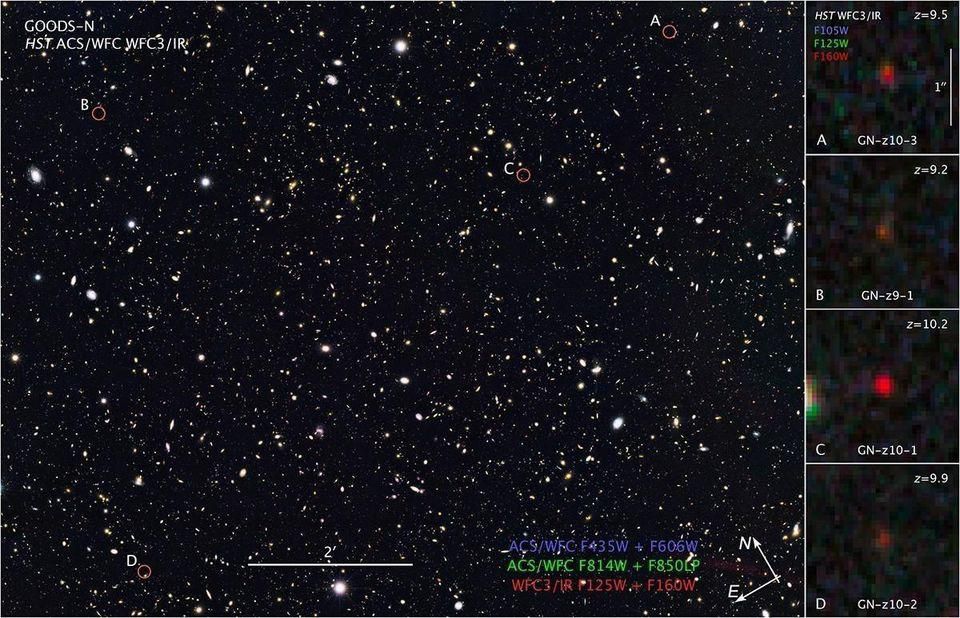
The astronomical observation of the GOODS-North , carried out with the Hubble telescope, made it possible to view some of the most distant galaxies that we have ever seen, many of which are already at an unattainable distance. Looking further and further, we discover that the most distant galaxies are moving away from us faster and faster, thanks to the expansion of the Universe.
Today’s Universe is filled with galaxies in all directions and at different distances. On average, the farther the galaxy is from us, the faster it is moving away from us. This is not due to the real movement of galaxies in their local space; all the fault of the expansion of the fabric of space.
This prediction was one of the unusual results obtained from the General Theory of Relativity in 1922 by the Soviet physicist Alexander Friedman , which was later confirmed in the observations of Edwin Hubble and other scientists in the 1920s. This means that over time, the matter of the Universe disperses and becomes less dense as the volume of the Universe increases. It also means that in the past, the universe was denser, hotter and more homogeneous.

Extrapolating development back, we come to earlier hotter and more dense states. Does all this lead to a singularity in which the laws of physics cease to work?
Extrapolating development back in time, you will begin to notice several important changes in the universe. In particular:
- You will arrive in an era in which gravity did not have time to form sufficiently large clumps of matter for the appearance of stars and galaxies.
- Then you will arrive where the Universe was so hot that it could not form neutral atoms.
- Then there will be a state in which even the nuclei of atoms will break apart.
- Then - where matter-antimatter particles will spontaneously appear.
- Then - where the individual protons and neutrons will decay into quarks and gluons.
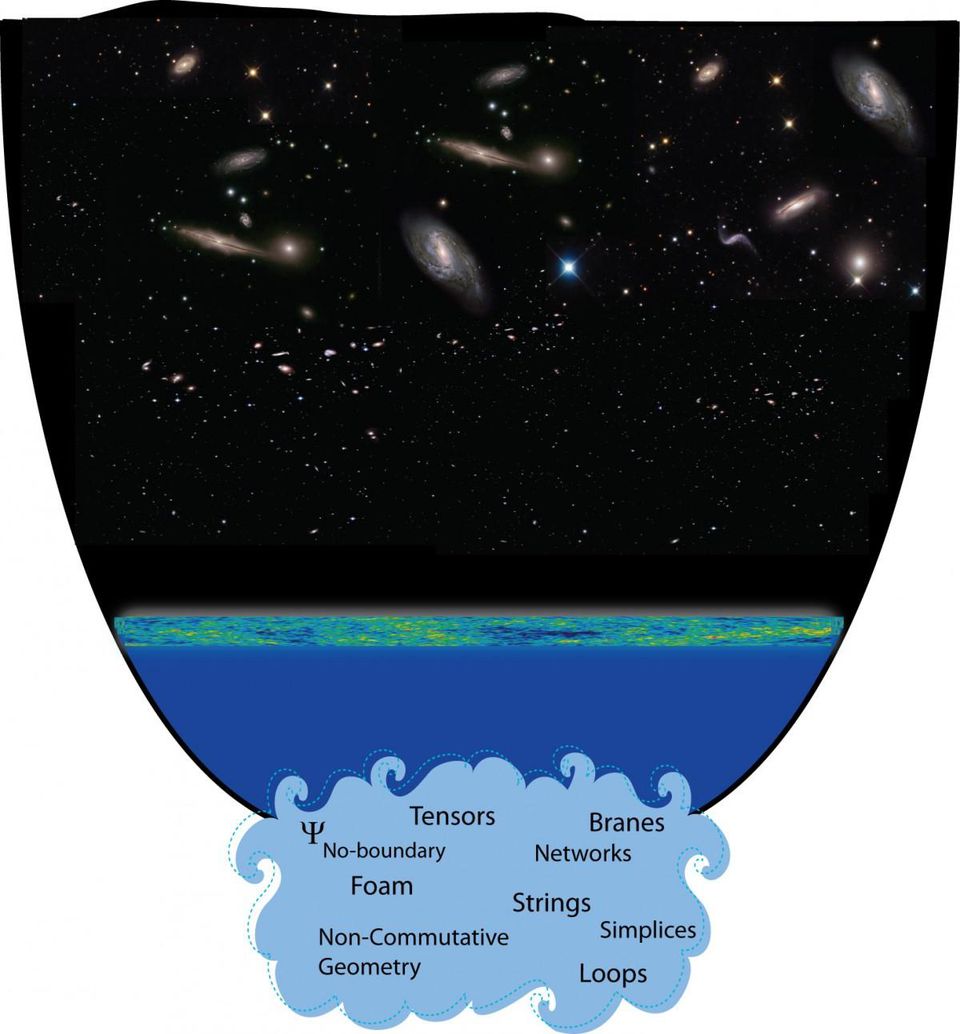
In the singularity, ordinary physics breaks down, including the very beginning of the Universe. However, the achievement of an arbitrarily hot and dense state has its consequences, many of which are not supported by observations.
Each step represents an ever younger, small, dense and hot Universe. Continuing the extrapolation, we will see that the density and temperature rises to infinite values, at the moment when all the matter and energy of the Universe was contained in one point: in the singularity. The hot Big Bang, as it was originally thought about, was not just a hot, dense and expanding state, but also the moment when all the laws of physics ceased to work. It was the birth of space and time, a way to make the whole Universe suddenly appear out of nowhere. This was the original act of creation: the singularity associated with the Big Bang.
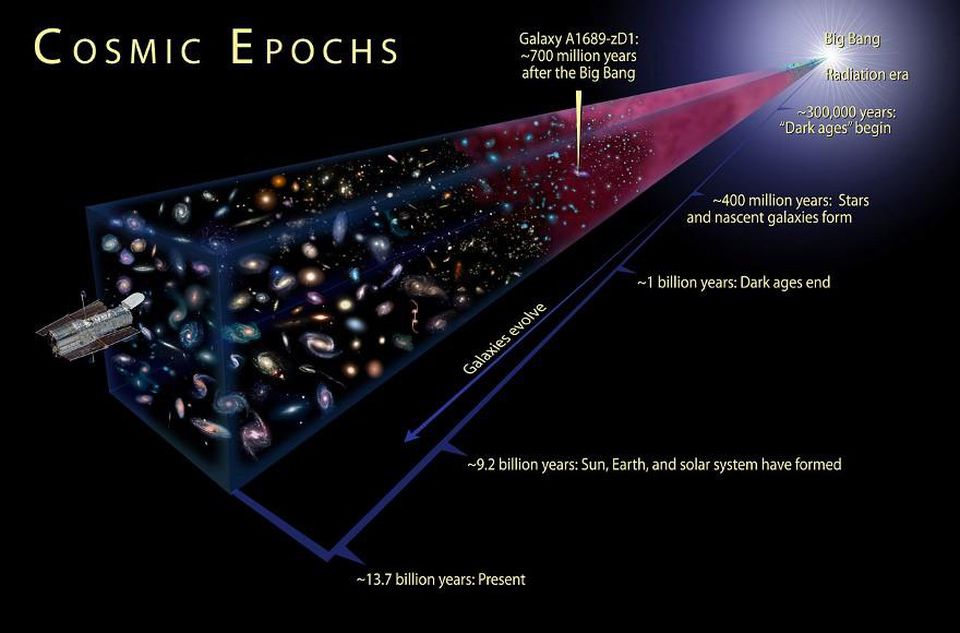
The stars and galaxies that we see today have not always existed. The further we go back in time, the closer to the singularity the universe will come - but extrapolation has its limitations.
However, if everything were exactly like this, and the Universe had had arbitrarily high temperatures in the past, such a state would have several obvious signs that could be observed today. In the residual glow of the Big Bang, there would be temperature fluctuations of enormous amplitudes. The fluctuations seen by us would be limited by the speed of light, they would appear only on scales not larger than the cosmic horizon . The relics of high-energy cosmos, such as magnetic monopoles, should have remained.
And yet, temperature fluctuations do not exceed 1/30 000, which is thousands of times less than the singular Big Bang predicts. Fluctuations exceeding the horizon exist, which has been reliably confirmed by the WMAP and Planck satellites. And restrictions on the existence of magnetic monopoles and other ultrahigh-energy relics are extremely strong. The absence of signs of their presence has serious consequences: there have never been arbitrarily high temperatures in the Universe.
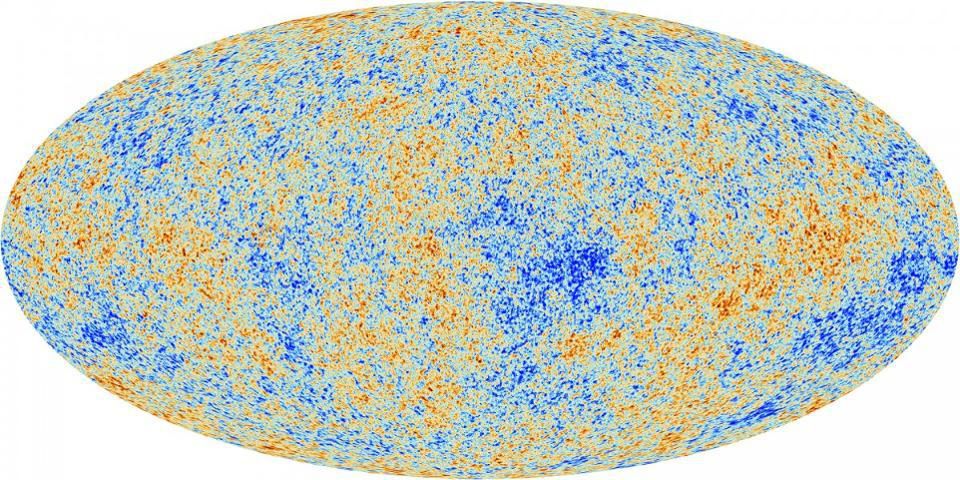
The fluctuations of the CMB are so small and so characteristic that they definitely imply the fact that at the beginning of the Universe there was the same temperature everywhere. The size of the fluctuations in the 1/30 000 completely does not correspond to the Big Bang of an arbitrary temperature.
There must be some kind of border. We cannot extrapolate back arbitrarily far to a hot and dense state with an arbitrarily high temperature. There is a limit on how far we can go, and at the same time correctly describe our Universe. In the early 1980s, a theory emerged that, before our Universe was hot, dense, expanding, cooling, and filled with matter and radiation, it experienced a state of inflation. The presence of the cosmic inflation phase should have meant that the Universe:
- was filled with the inherent energy of space,
- which led to rapid, exponential growth,
- which sprawled the universe to a flat state
- gave her the same properties everywhere,
- with small amplitude quantum fluctuations,
- stretched on all scales (even exceeding the horizon),
- and then inflation is over.
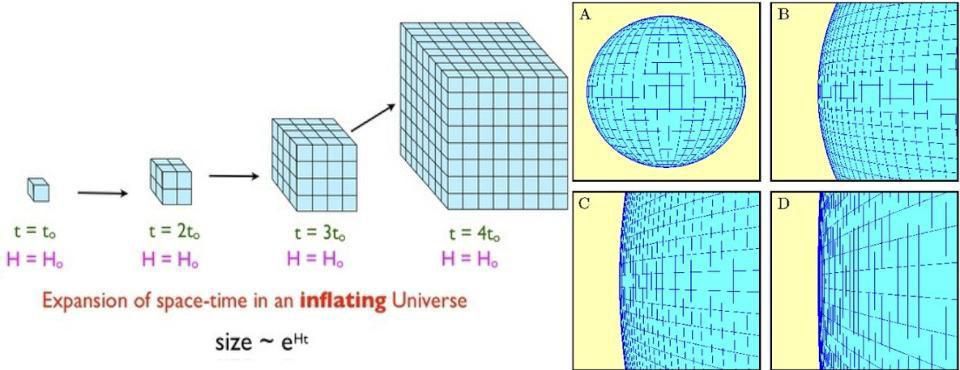
Inflation causes the space to expand exponentially, which can quickly lead to the fact that the initially curved or nonsmooth space seems flat. Even if the Universe is curved, its radius of curvature is at least a hundred times larger than what we can detect.
When inflation ends, it transforms the energy inherent in the space itself into matter and radiation, which generates a hot Big Bang. But this does not lead to an arbitrarily hot Big Bang — only one that reaches a maximum temperature hundreds of times lower than the temperature capable of generating a singularity. In other words, it leads to a hot Big Bang arising from the inflationary state, and not from the singularity.
The information existing in our observable part of the Universe, which we can measure, due to the availability of access to it, corresponds only to the last 10 -33 seconds of inflation, and everything that happened after that. If you want to ask how long the inflation lasted - we have no idea about this. It lasted at least a little longer than 10 -33 seconds, but whether it lasted a little longer than this, much longer, or there was an infinite amount of time - it is not just unknown, it is impossible to know in principle.
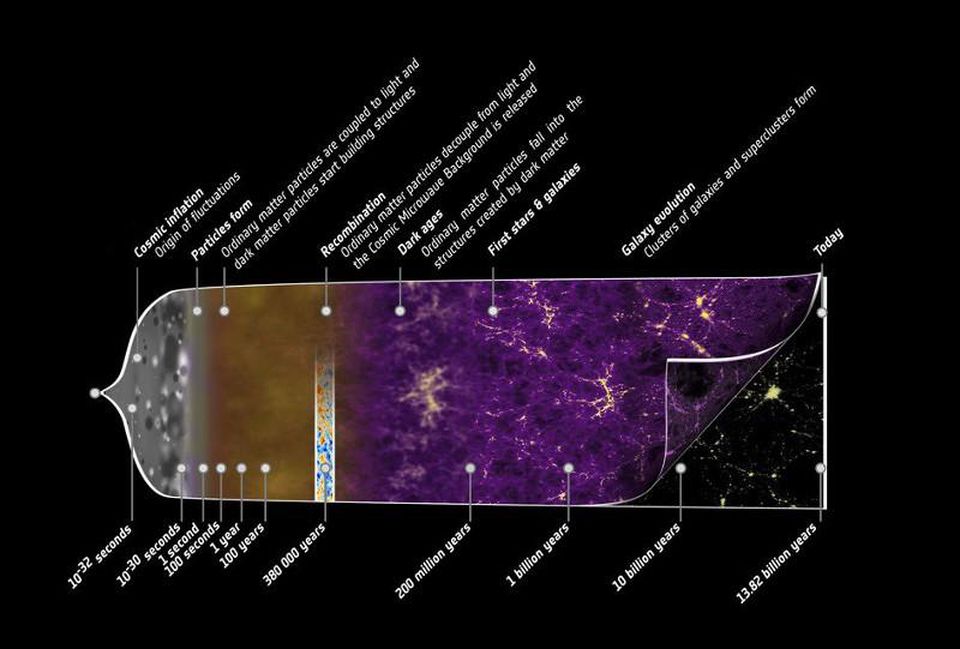
The cosmic history of the known universe shows that we owe the origin of all matter and all the light inside it to the end of inflation and the beginning of the hot Big Bang. Since then, 13.8 billion years has been a cosmic evolution. This picture of development is confirmed by most sources.
What gave rise to inflation? There is a lot of research and discussion on this topic, but no one knows. There is no evidence to draw upon, no observations that could be made, no experiments that could be carried out. Some people make erroneous statements like:
We had the theory of the singularity of the Big Bang, which gave birth to a hot, dense, expanding Universe, before we learned about inflation; inflation is simply an intermediate stage. Therefore, we have the following: singularity, inflation, hot Big Bang.
There are many graphs and pictures created by leading cosmologists to illustrate this scenario. But this does not mean that he is faithful.
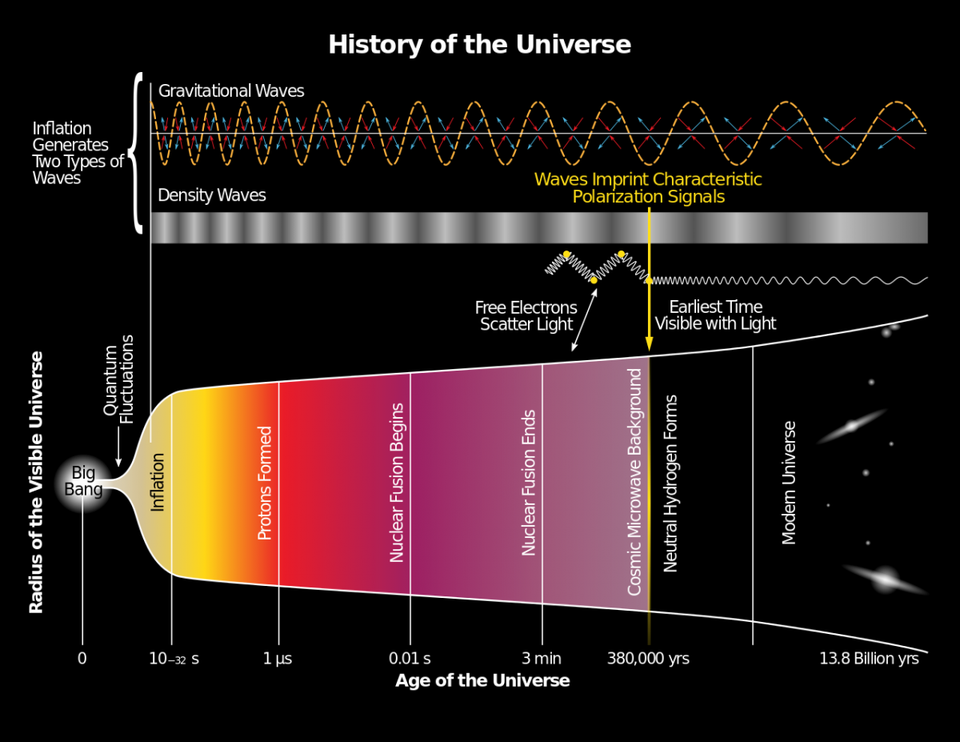
Illustration of density fluctuations (scalar) and gravitational waves (tensor), which appeared at the end of inflation. The assumption of the existence of a singularity before inflation is not necessarily true.
There are very good reasons to believe that this is not so! We can mathematically demonstrate the impossibility of the emergence of an inflationary state from a singularity. And here's why: space during inflation expands at an exponential rate. Imagine how the exhibitor works: after a certain amount of time, the Universe doubles its size. It will take twice as long, it will double twice, that is, it will be four times more. Wait three such periods of time, and it will double three times, that is, it will be 8 times longer. Wait 10 or 100 of these lengths of time, and these doublings will make the Universe 2 10 or 2 100 times larger.
Which means that if we go back in the past for the same length of time, or two, or three, or 10 or 100 times larger, the Universe will be less and less, but will never reach zero. It will accordingly be half, quarter, 1/8, 2 -10 , 2 -100 of the original size. But no matter how far in time we go, we will never come to singularity.
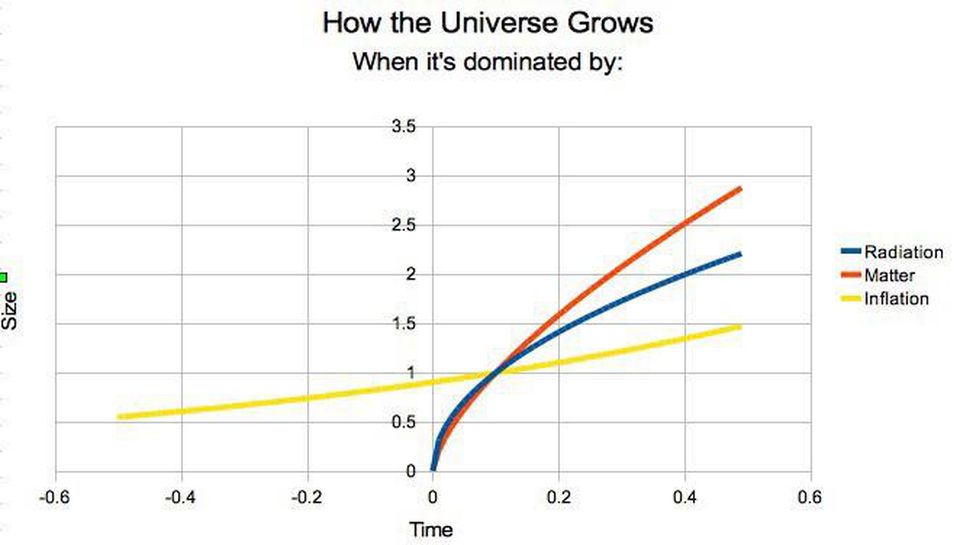
The blue and red lines are the traditional scenario of the Big Bang, when everything starts at time t = 0, including space-time itself. In the inflationary scenario (yellow), we never arrive at a singularity, in which space takes a singular state. It can become any small in the past, and time goes on forever. The condition of the absence of Hawking-Hartl and the Borda-Guta-Vilenkin theorem are trying to determine the duration of this state , but they cannot be called definitive.
Among cosmologists, the theorem is well known.showing the incompleteness of the past inflationary state. This means that all particles that exist in the Universe experiencing inflation will sooner or later meet in extrapolation backward in time. This, however, does not mean that the singularity necessarily existed - just inflation does not describe everything that happened in the history of the Universe, for example, its birth. We also know that inflation cannot emerge from a singular state, since an area that is experiencing inflation must always start from a finite size.
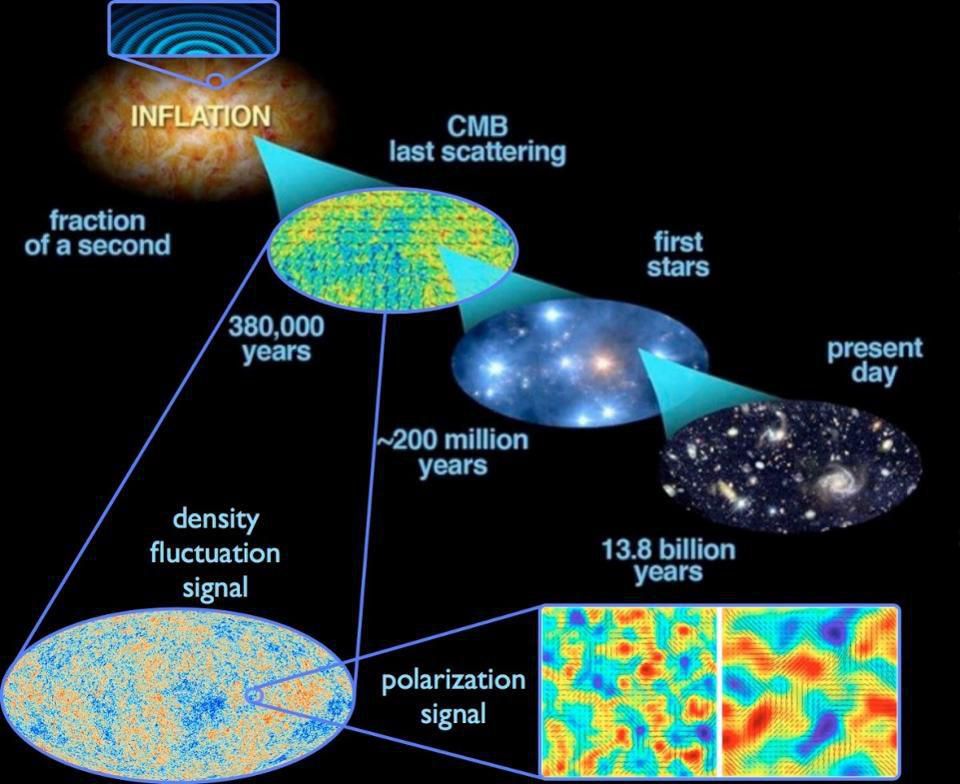
Fluctuations of space-time on a quantum scale during inflation stretch across the entire Universe, and give rise to imperfections in density and gravitational waves. Whether inflation originated from a singularity, or not, is unknown to us.
Every time you see a diagram, article, or story about the "big bang singularity" or some other singularity that existed before inflation, know that you are dealing with outdated thinking. The idea of the singularity of the Big Bang lost its relevance as soon as we realized that before the hot and dense state of the Big Bang there was another state - cosmic inflation - which prepared and launched the Big Bang. At the very beginning of space and time, perhaps, there could be a singularity from which inflation emerged - but there is no guarantee of this. There are things in science that can be tested, measured, predicted, confirmed or refuted - for example, inflation, which gave rise to the hot Big Bang. Everything else is nothing more than idle speculation.
And this is the last translation of Ethan Siegel's article on Habré (and, in principle, articles on the topic of cosmology), since it was decided to concentrate on the subject of the resource on development and IT.
